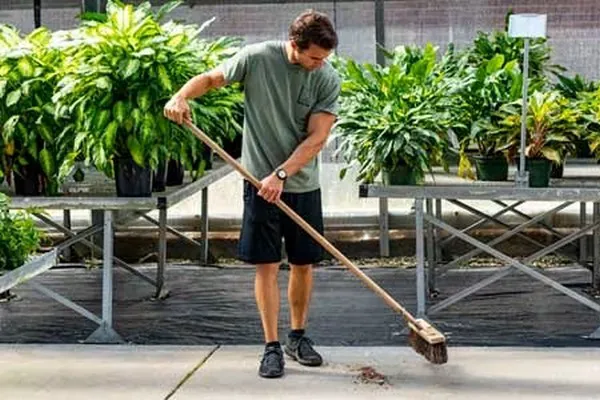Spring cleaning is more than simply cleaning glass and putting away winter shovels. It's a run-through of your entire operations to ensure you're ready for the busy season.
Along with uncovering any defective or unnecessary items on your property, spring cleaning can help you identify gaps in your risk management process and address any safety concerns.
Now is a good time to inspect your facilities, clear the premises of hazards, and reinforce safety messages across your company.

Start with basic preparation steps
Here are some basic practices you can put in place to help reduce risks and keep your property tidy.
-
Clean up spills: Immediately wipe up spills, accidents, and water overflow to help prevent customer and employee falls
-
Organize materials: Stack boxes and displays neatly, with heavy or bulky items on the bottom
-
Unclutter walkways: Move plants, displays, and low-hanging items from traffic areas
-
Keep doors closed: Shut cabinet doors and drawers—reorganize items if needed to get them to close properly
-
Put equipment away: Store items such as garden hoses and tools after use—never leave them in walkways
-
Keep floors free of clutter: Keep stairways, aisles, and exits free of boxes, tools, and other items
-
Throw garbage out: Properly dispose of waste and scraps in appropriate receptacles
-
Avoid overloading: Don't overfill bins, racks, or storage areas
-
Observe manufacturer guidelines: Follow equipment cleaning and maintenance routines
-
Maintain good lighting: Provide a better atmosphere and visibility with natural and electrical light
-
Protect safety equipment: Keep sprinkler heads, fire extinguishers, and exit paths free of obstructions
-
Check for drips: Make sure pipes and containers that hold hazardous substances aren't leaking
Avoid slips, trips, and falls
Slips, trips, and falls are some of the biggest reasons for injuries and resulting claims—including workers' compensation—in our industry. Train your employees on the importance of spotting, reporting, and cleaning up slip-and-fall hazards.
Remind your employees to take immediate action when they notice potential hazards:
-
Post clear warnings informing customers and employees that floors may be slippery
-
Cordon off the area
-
Clean up or address as soon as possible
Water is one of the biggest and most common hazards. Display wet floor signs (with multiple languages if possible) with pictures in areas where water is in use or present.
Have squeegees on hand to push pooling water into the drain or out of the way. Use mats or other non-slip surfaces in areas where water is likely to be present.
In addition, train your employees to identify and report any algae that may begin to grow, as it's extremely slippery. Algae is a common hazard when frequent watering takes place, especially when fertilizer is present.
Take cleanup strategies a step further
There are additional actions you can take to help prevent hazards:
-
Perform regular inspections: Assign employees to look for hazards as part of their daily duties
-
Train your employees: Demonstrate proper storage techniques, safe handling of materials, and cleanup procedures
-
Document your efforts: Put what you teach in writing via employee notices, new-hire guides, and company records
Hold regular training sessions and develop a safety team to identify any new issues. It can help you avoid costly workers' compensation and liability claims.
Cleaning up your property and providing a safer work environment can have benefits that extend beyond a reduction in claims. Here are a few examples:
-
Improved control of tools and materials
-
Better plant health
-
More efficient use of space
-
Reduced property damage
-
Less janitorial work
-
Improved morale
-
Decreased fire hazards
-
Lower worker exposures to hazardous substances
For more information: Hortica
Hortica
www.hortica.com
